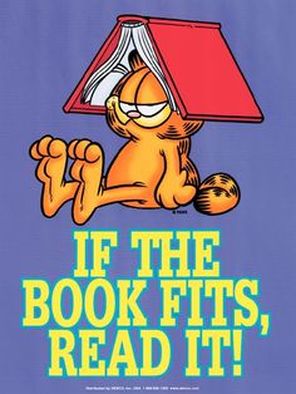|
I once picked a book to read to my daughter that she hated. She walked away mid-read.
I've also picked a book to read aloud in the classroom that the kids hated (for the record, it was Bud, not Buddy and actually my Assistant Principal picked it, so I give myself some slack). It was a bad choice because it was way above the kids' reading levels. And, I've even picked books for myself to read that I hated. One of which is listed as a classic and you might judge me, but it was Uncle Tom's Cabin. I just couldn't finish it - and I've tried at least 10 times. And here's what happens when you are reading a book that isn't well received. No one has fun. |
I know you're thinking, this seems obvious, but here's what's not. How to pick the right book to read at home with your child.
There are a few thing to consider when picking a book - but here is one that your child's teacher would like you to consider - pick books to read at home that further your child's ability to actually read.
Here's how to do that.
1. Know your child's reading level.
If reading is one way to make sense of the world, then you must know which parts of the world your child already understands. And which parts are not clear. You need a starting point - and this is where your child's reading level comes to play.
If you know your child's reading level, that's great! But also, you need to know what that means. I will write more on that for each guided reading level, but ask your classroom teacher what the reading level means.
Each reading level is comprised a set of skills that need to be mastered that are very specific. An example of an assessment of 3rd graders might include, using details to support retelling of a story, making accurate inferences, all the way down to developmental spelling tests, reading rate, reading accuracy and reading behaviors - self-corrects, reads with expression.
After you know what your child's reading level is and what it means, you'll know what you need to do to support your child on in their reading.
If you know your child's reading level, that's great! But also, you need to know what that means. I will write more on that for each guided reading level, but ask your classroom teacher what the reading level means.
Each reading level is comprised a set of skills that need to be mastered that are very specific. An example of an assessment of 3rd graders might include, using details to support retelling of a story, making accurate inferences, all the way down to developmental spelling tests, reading rate, reading accuracy and reading behaviors - self-corrects, reads with expression.
After you know what your child's reading level is and what it means, you'll know what you need to do to support your child on in their reading.
2. Ask your child's classroom teacher for suggestions.
Every classroom teacher has a list of books that they read aloud with their classrooms. And, there is also the "If we get to it by the end of the year" list. Often, that list contains great, great books but are never read to your child.
Your child's classroom teacher can point you in the right direction...
Your child's classroom teacher can point you in the right direction...
3. Ask your child.
But also, you don't want your child to walk away mid-read. Or be bored to tears. So, if your child has an opinion or a favorite genre, please, please consider that.
As research has shown, some kids pick books based on their covers or how spaced out the text is - or my favorite, how many words are on the page at all. Some kids based on the length of the book and some kids use a taught-at-school method for picking books (like the Five Finger method).
As research has shown, some kids pick books based on their covers or how spaced out the text is - or my favorite, how many words are on the page at all. Some kids based on the length of the book and some kids use a taught-at-school method for picking books (like the Five Finger method).
4. Go to the library or book store. Browse books.
Then go to a physical place with physical books. Your kids are taught how to choose books from their classroom libraries. And this requires physical books to browse through.
When you take them to the library or book store, you will see how they choose their books. You will get insight into their reading minds. And you will see what they pick up, what they set down, what they bypass altogether.
Let them pick a few, write down the titles (unless one totally stands out as a home run book that you want to read too...)
When you take them to the library or book store, you will see how they choose their books. You will get insight into their reading minds. And you will see what they pick up, what they set down, what they bypass altogether.
Let them pick a few, write down the titles (unless one totally stands out as a home run book that you want to read too...)
5. Ask your child's classroom teacher, again.
Your goal is to have a book to read at home that is 1-2 instructional levels above your child's reading level so there is space for your child to learn but not be overwhelmed. You don't want to have a great book that you'd love to read, but it be way too easy or way too hard.
There are some books that sound great to read with kids, but are actually much more meaningful until they have better understanding - otherwise, you will be stopping to explain absolutely everything or they will miss crucial comprehension because they just didn't have the capacity to make the connections.
There are some books that sound great to read with kids, but are actually much more meaningful until they have better understanding - otherwise, you will be stopping to explain absolutely everything or they will miss crucial comprehension because they just didn't have the capacity to make the connections.
A great example of this is Harry Potter. Harry Potter books are written at a Guided Reading Level V. Level V is usually associated with 5th grade reading. And, I know that some kids, once they catch fire reading, read much above their level by end of 3rd or beginning of 4th grade.
But here's one of the reasons Harry Potter is Level V - because of content. Deatheaters. Voldemort. Basilisk. Three-headed dogs. Dead parents who appear in mirrors. It's scary. And dark. Darker and scarier than any other text a 3rd grader will see in school, usually. You'd really want to wait until your child has done a little more reading, is confident in their abilities to walk away from a book for a bit if they are too scared, or ask lots, and lots of questions (and ones you are okay answering).
I read Harry Potter as an adult. And I tore through them - but I also found lots of connections to history - eugenics, connections to other literature (C.S. Lewis), and Macbeth. Harry Potter is loaded with connections to other big texts in our lives. And, I still enjoyed them as an adult.
So you'd at least want to wait until your child is reading comfortably at a Guided Reading Level T before going into Harry Potter. You'll get more enjoyment that way, your child will learn more. Plus, there are other great fantasy series to start them on to build them up to Harry Potter, if that's what they happen to pick-up.
And, this is true with any book. You want to hit the sweet spot - 2 levels above their independent reading level. Your child's classroom teacher will be able to tell you the reading level of the books you've got on your short list from the bookstore, and that might make the reading decision for you.
I read Harry Potter as an adult. And I tore through them - but I also found lots of connections to history - eugenics, connections to other literature (C.S. Lewis), and Macbeth. Harry Potter is loaded with connections to other big texts in our lives. And, I still enjoyed them as an adult.
So you'd at least want to wait until your child is reading comfortably at a Guided Reading Level T before going into Harry Potter. You'll get more enjoyment that way, your child will learn more. Plus, there are other great fantasy series to start them on to build them up to Harry Potter, if that's what they happen to pick-up.
And, this is true with any book. You want to hit the sweet spot - 2 levels above their independent reading level. Your child's classroom teacher will be able to tell you the reading level of the books you've got on your short list from the bookstore, and that might make the reading decision for you.
6. Read!
Go buy the book - or two copies of it. You can read while your child follows along in another copy. Or read one together - whichever is most comfortable for you.
And, while you're reading model the things that your child needs extra support in reading. You might need to read with proper phrasing and volume because your child needs to hear what reading fluently sounds like. You might need to stop and think out loud what will happen next because your child needs helps making predictions based on details you have from the book. You might need to make connections from the book to your own life so that you can better empathize with the characters in the book and understand their motivations because your child needs to critically think about whether a character is believable or not.
These are all things you already do as a good adult reader - and with your support, your child will too.
Go pick a book. Enjoy!
And, while you're reading model the things that your child needs extra support in reading. You might need to read with proper phrasing and volume because your child needs to hear what reading fluently sounds like. You might need to stop and think out loud what will happen next because your child needs helps making predictions based on details you have from the book. You might need to make connections from the book to your own life so that you can better empathize with the characters in the book and understand their motivations because your child needs to critically think about whether a character is believable or not.
These are all things you already do as a good adult reader - and with your support, your child will too.
Go pick a book. Enjoy!





